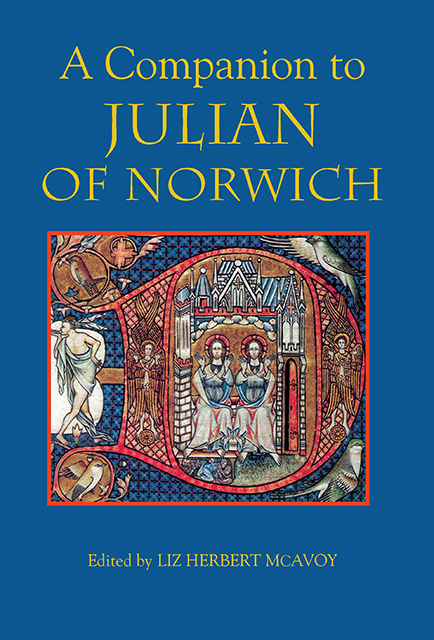1 - Femininities and the Gentry in Late Medieval East Anglia: Ways of Being
Published online by Cambridge University Press: 10 March 2023
Summary
In present-day Norwich one can visit a version of the church where the recluse who called herself Julian spent perhaps forty years of her life. I say ‘version’ because although St Julian's Church, off Rouen Road in the south-east corner of the city, looks medieval it was largely reconstructed following severe damage suffered during bombing raids in 1942. ‘Mother Julian's Cell’ is an entirely modern structure built from scratch in the early 1950s. It adjoins the south wall of the church and is accessible via a Norman doorway moved to the site from the bombed-out church of St Michael at Thorn. Despite the cell's recent construction, Norwich tourist literature confidently asserts that it is ‘on the site of her original cell’ or that the present structure is ‘Julian's cell … now enlarged and furnished as a chapel’. Like so much about modern reconstructions of Julian's life, this is a fiction. The cell is no more medieval than the post-war housing estates in modern Conisford. The site of Julian's anchorhold is not known for certain, but Roberta Gilchrist and Marilyn Oliva comment that it would be unusual for an anchoress's cell to be placed against the south wall of a church, given that most surviving examples are on the north side. Compelling counter-evidence is also offered by the eighteenth-century antiquarian Francis Blomefield, describing the church he visited: ‘In the East Part of this Church-yard stood an Anchorage, in which Ankeress or Recluse dwelt ‘till the Dissolution, when the House was demolished, tho’ the Foundations may still be seen: In 1393, Lady Julian the Ankeress here, was a strict Recluse, and had 2 Servants to attend her in her old Age.’ If we are to believe Blomefield the cell was never attached to either the north or south wall of the church, but was a freestanding structure. On a brief visit to St Julian's in January 2007 I peered over the churchyard wall towards the place where Julian's cell may once have stood and felt the futility of overenthusiastic attempts to reconstruct details of Julian's life.
The two versions of Julian's revelations – especially the later Long Text, A Revelation of Love – deliberately omit autobiographical narrative, unlike Margery Kempe's account or those of many other contemporary mystical writers. The few biographical details that one can be reasonably sure about are summarised by Liz Herbert McAvoy in the Introduction to this volume.
- Type
- Chapter
- Information
- A Companion to Julian of Norwich , pp. 19 - 31Publisher: Boydell & BrewerPrint publication year: 2008
- 1
- Cited by



